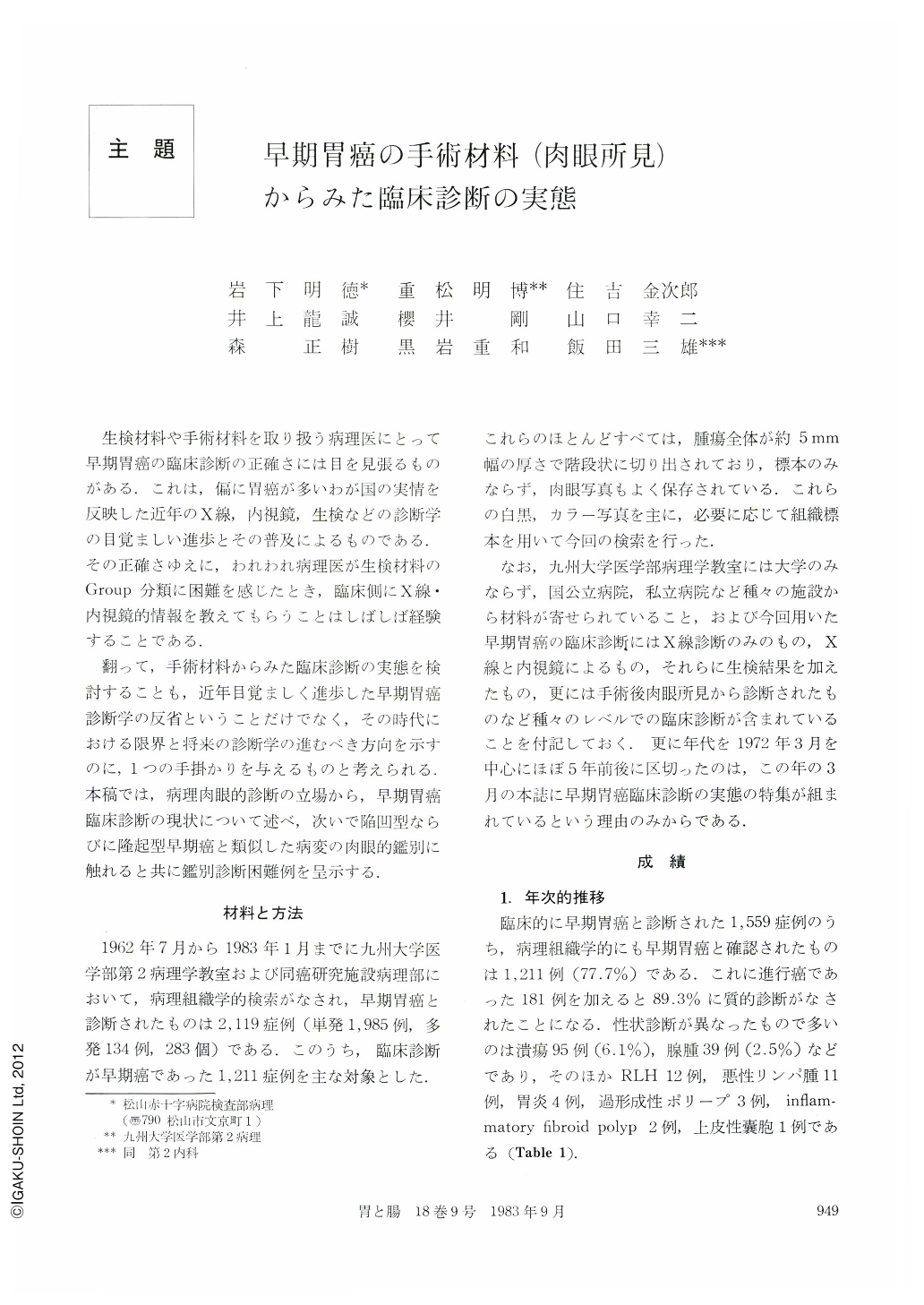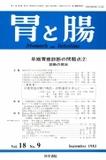Japanese
English
- 有料閲覧
- Abstract 文献概要
- 1ページ目 Look Inside
生検材料や手術材料を取り扱う病理医にとって早期胃癌の臨床診断の正確さには目を見張るものがある.これは,偏に胃癌が多いわが国の実情を反映した近年のX線,内視鏡,生検などの診断学の目覚ましい進歩とその普及によるものである.その正確さゆえに,われわれ病理医が生検材料のGroup分類に困難を感じたとき,臨床側にX線・内視鏡的情報を教えてもらうことはしばしば経験することである.
翻って,手術材料からみた臨床診断の実態を検討することも,近年目覚ましく進歩した早期胃癌診断学の反省ということだけでなく,その時代における限界と将来の診断学の進むべき方向を示すのに,1つの手掛かりを与えるものと考えられる.本稿では,病理肉眼的診断の立場から,早期胃癌臨床診断の現状について述べ,次いで陥凹型ならびに隆起型早期癌と類似した病変の肉眼的鑑別に触れると共に鑑別診断困難例を呈示する.
Surgical materials from 1,559 patients diagnosed clinically as early gastric cancer were studied from a macropathologic viewpoint, the study being attempted to concern certain aspects of present status of clinical diagnosis for early gastric cancer. The result and the discussion were as follows:
1) During the past about twenty-year period the rate of accuracy in the diagnosis of early gastric cancer was on the average 78 per cent in 1,559 cases, however it rose up year by year and was 86% in the last one year. Of remaining 348 cases 181 or 12% were in errors as far as depth of cancer invasion was concerned. Erroneous diagnoses in the nature of lesions were seen in 95 cases of benign peptic ulcers (6.1%), 39 cases of adenomas (2.5%), 12 cases of reactive lymphoreticular hyperplasia and 11 cases of malignant lymphoma.
2) The important and fundamental findings for macroscopic differential diagnosis of depressed type of early gastric cancer from other lesions such as peptic ulcers or reactive lymphoreticular hyperplasia, many of which have been pointed out previously, were as follows: (1) clear line of division between the lesion and the surrounding mucosa, (2) abrupt narrowing of the convergent folds of the mucosa, (3) irregular margins of the lesion, (4) color and surface condition of the lesion, and (5) numbers of complicated peptic ulcers in the lesion. We considered (1) and (2) as the most important and useful findings for differential diagnosis for gastric depressed lesions.
3) As concerns macroscopic differential diagnosis between protruded and/or elevated type of early gastric cancer and gastric adenoma, the gross findings such as (1) size of the lesion, (2) color of the lesion, (3) the possible existence of surface erosion in the lesion, and (4) irregularity of the size of the surface nodules were certainly important, however the differential diagnosis was very difficult and there were no conclusive macroscopic differences between protruded and/or elevated type of early gastric cancer and gastric adenoma.
4) Finally, we referred to that one should make effort to detect the useful findings to differentiate advanced cancers with minimal proper muscular invasion from early gastric cancer and the new methods in order to differentiate elevated type of early gastric cancer from gastric adenoma, and to eliminate the error of detection of another early cancers in cases with multiple gastric cancers in future.

Copyright © 1983, Igaku-Shoin Ltd. All rights reserved.


